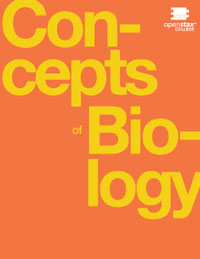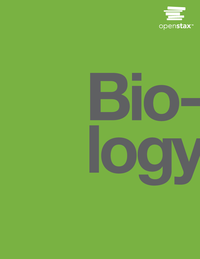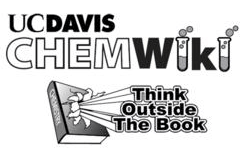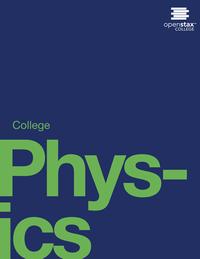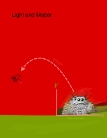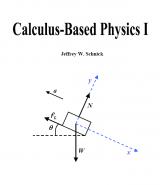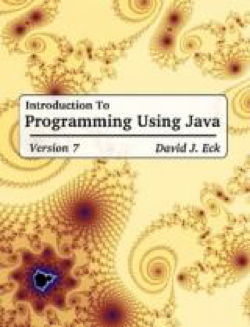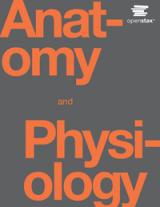Faculty Showcase: Science and Technology
Britt T. Elliott, Captain from California Maritime Academy
eTextbook: A Variety of OERs (Open Education Resources)
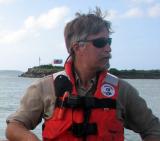
Course Description:
This course prepares the student for the U.S. Coast Guard Lifeboatman's Endorsement. Students will be instructed in the preparation, embarkation, and launching of survival craft and will become familiar with the correct use of all survival equipment, as well as the proper actions to take to preserve the lives of those in their charge.
Quote
"Many of the books covering my topics are expensive and obsolete. I cannot justify having students spend money on books when only certain chapters have any value."
Britt T. Elliott, Captain from California Maritime Academy
eTextbook: A Variety of OERs (Open Education Resources)
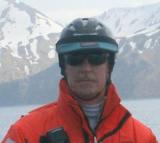
Course Description:
The study of basic seamanship, including sea terms and nomenclature, small boats, merchant ship characteristics, deck fittings, rigging, equipment, appliances, life-saving devices, and emergency procedures.
Quote
"The main motivation to adopt these materials is that the majority of US Seamanship textbooks are completely out of date. I could not justify to my students or myself to buy various titles to cover the subject matter."
Virginia Moran from Yuba College
eTextbook: Chapters from Concepts of Biology from OpenStax College
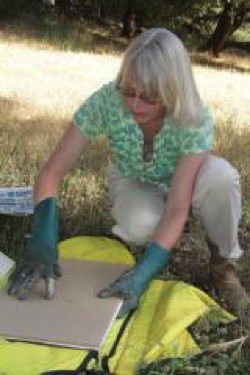
Course Description:
Ecology studies the interaction and interdependence among living organisms in their environment. The course presents fundamental scientific principles in examining how natural ecosystems function and how human actions affect natural ecosystems. Emphasis is placed on the role of science in determining causes and in contributing solutions to local and global environmental problems.
Quote
"Many of my students are low income and being able to access free quality online textbooks is going to help them immensely."
Wendy Riggs from College of the Redwoods, CA
eTextbook: Concepts of Biology by OpenStax College

Course Description:
An introductory course in life science dealing with basic biological concepts including molecular and cell biology, metabolism, heredity, evolution, ecology, natural history, and biodiversity.
Note: This course is designed for non-science majors and nursing/health occupation students. Not open to students who have completed or who are currently enrolled in BIOL-3.
Quote
"With the arrival of Concepts of Biology, it suddenly became much easier to use OER! Once we adopted Concepts of Biology, we were able to create a customized copy of the text and order printed copies. Our bookstore was incredibly supportive of our efforts to reduce student cost."
Christopher Callahan, M.S. from Humboldt State University
eTextbook: Biology by Y. Avissar, J. Choi, J. DeSaix, V. Jurukovski, R. Wise, and C. Rye from Openstax.org

Course Description:
The human animal as a biological entity: structure, function, health and disease, evolution and behavior.
Quote
"I decided to use an open textbook because many of my students were not able to purchase the recommended textbook for the class."
Jane Monroe, M.A. from Humboldt State University
eTextbook: Biology by Y. Avissar, J. Choi, J. DeSaix, V. Jurukovski, R. Wise, and C. Rye from Openstax.org
Course Description:
This course examines the human animal as a biological entity: structure, function, health and disease, evolution and behavior.
Quote
"The two main motivations for adopting OpenStax's Biology were to lower costs for the students and to have a customizable text."
Roxann Schroeder, Ph.D. from Humboldt State University
eTextbook: Biology from OpenStax College

Course Description:
Fundamental processes of life. Structure and function of cells, genetics, evolution, and ecology.
Quote
"The major reason I adopted this textbook was for the cost savings. When I asked my students, I found that many did not buy the book (they either borrowed it, tried to get access to the copy on reserve at the library, or did without)."
Suzanne Wakim from Butte Community College, CA
eTextbook: Introduction to Biology for the Open Learning Initiative

Course Description:
Students will develop an understanding of important current issues by understanding the biological principles. Biological principles include: the scientific method; biological macromolecules; cell structure and function; cell division; genetics; DNA structure and function; metabolism; evolution; and ecology. Issues covered may include: the nature of science, nutrition, stem cells, cancer, genetic diseases, cloning, genetic engineering, gene therapy, nature versus nurture, ecological diversity, invasive species, sustainability, and the role of humans in the environment.
Quote
"When I surveyed students about the traditional publisher textbook found that roughly half the students selected to buy the paper text, but many of these students ended up using both the paper text and the OER. Student commented that they appreciated the option, and I have kept these two options in my class since."
Delmar Larsen from University of California, Davis
eTextbook: UC Davis Chemwiki

Course Description:
Periodic table, stoichiometry, chemical equations, physical properties and kinetic theory of gases, atomic and molecular structure and chemical bonding. Laboratory experiments in stoichiometric relations, properties and collection of gases, atomic spectroscopy, and introductory quantitative analysis.
Quote
"We have mapped the ChemWiki curriculum to the Petrucci, Herring. Madura, et.al 10th edition as part of the NSF Grant. This mapping can help adopting faculty to understand the navigation through ChemWiki from a previously used traditional textbook."
Ron Rusay from Diablo Valley Community College, CA
eTextbook: ChemWiki Diablo Valley College

Course Description:
An introduction to the fundamentals of chemistry including the topics: atomic theory, chemical reactions, bonding, structure, stoichiometry, gases, solutions, redox, thermochemistry, equilibrium, and acid-base chemistry.
Quote
"I became involved with ChemWiki about three and half years ago during its first year of development. My interest in OER is for the pedagogical improvements that it makes possible. Students in my chemistry classes are very well-prepared to go on to the next level."
Marusa Bradac from University of California, CA
eTextbook: College Physics by OpenStax College
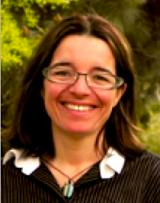
Course Description:
This course is physics for nonscientists, and focuses on the survey of basic principles or a deeper exploration of some particular branch. Topics include black holes, space time, and relativity; physics of music; history and philosophy; energy and the environment; and natural phenomena.
Quote
"Saving students money was the main motivation for adopting the open textbook. Also there was no specialized textbook for teaching Physics of California and this textbook had a lot of everyday examples.The open textbook was incomplete for my course but all textbooks are so I supplemented it with external materials."
Zvonko Hlousek from California State University Long Beach
eTextbook: College Physics by OpenStax College
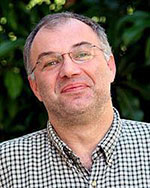
Course Description:
Year course in introductory physics for non-majors. First semester considers properties of matter, mechanics, wave motion, and heat. Second semester considers electricity, light, and atomic and nuclear physics. Letter grade only (A-F). (Lecture 3 hrs, laboratory 3 hrs.)
Quote
"It's very simple what motivated me to adopt OER. A publisher physics textbook fully bound is $250, a loose leaf book is $150, and the e-book is $120 or more. OpenStax College Physics is free to students online so the numbers tell the story."
Leah Sharp, Ph.D. from College of Marin
eTextbook: College Physics from OpenStax College

Course Description:
This course introduces topics in physics including motion, forces, energy, oscillation, waves, fluids, heat, and thermodynamics. The course emphasizes problem-solving based in algebra and trigonometry, as well as laboratory investigations and experimental techniques.
Quote
"The main motivation for adopting the open textbook was to save students money."
Dan Fernandez, Ph. D. from California State University, Monterrey Bay
eTextbook: Light and Matter by B. Crowell

Course Description:
Emphasizes motion, mechanics, energy, and fluids using active and experiential learning.
Quote
"Some of the aspects of the textbook that the students appreciated, in summary, were that it was free, that it provided interesting, useful, and relevant background discussion on many topics within physics in a readily intelligible manner, and that it tends to provide excellent historical context on many topics."
Nelson Coates, Ph.D. from California State University Maritime Academy
eTextbook: Calculus-Based Physics, Vol. 1 by J. W. Schnick

Course Description:
Covered are forces, torques, and static equilibrium; constant, accelerated, and periodic linear and rotational dynamics; gravity; fluid statics and dynamics; elasticity; temperature, thermal expansion, and heat transfer.
Quote
"The main motivation for adopting this textbook was to save the students money, and also instead of having them spend money purchasing a textbook, have them purchase an online HW service subscription instead."
Amlan Chatterjee, Ph.D. from California State University, Dominguez Hills
eTextbook: Data Structures and Algorithm Analysis in Java by C. Shaffer

Course Description:
More advanced and detailed treatment of concepts of data organization including lists, trees, graphs and storage allocation and collection. Applications to such areas as symbol tables, string search, and optimization.
Quote
"The main motivation for adopting the open textbook was to save students money and provide access to the material online from anywhere using an electronic device."
Luidong Zuo, Ph.D. from California State University, Dominguez Hills
eTextbook: Introduction to Programming Using Java

Course Description:
This is an advanced Java programming course. Through extensive programming exercises and projects, students are expected to have a much deeper understanding about major aspects of object-oriented programming and significantly enhance their programming and problem solving ability.
Quote
"After overall comparison, I decided to adopt this open textbook. The textbook is free to access in various forms and will save our students a lot of money. The website is very well designed in a real textbook format. Lots of references can be found on the website to give students further and advanced study opportunities."
Aaron J. Corcoran, Ph.D. from Humboldt State University
eTextbook: Anatomy and Physiology by J. Betts, P. DeSaix, E. Johnson, J.
Johnson, O. Korol, D. Kruse, B. Poe, J. Wise, M. Womble, and K. Young
from Openstax.org

Course Description:
Physiological mechanisms of human body. Emphasis: organ level of integration. No credit toward a major in biology, botany, or zoology.
Quote
"The main motivation for adopting this text was to save students money while ensuring they have access to high-quality learning materials."
Nicolas R. Malloy, M.S. from Humboldt State University
eTextbook: Geospatial Concepts by Nicolas Malloy

Course Description:
Overview: scale, coordinates, geodesy, direction, projections, surveying, global positioning systems (GPS), remote sensing, geographic information systems (GIS), cartography; historical context illustrating how maps depict spatial relationships, chart power, convey authority.
Quote
"Accessibility is one of the primary advantages of a digital textbook. Course lessons, graphics, audio, and video for the course are designed to meet California State University goals for accessible technology. In addition, best practices are used for web page structure, semantics, and organization to optimize the use of assistive technologies. The goal is to ensure that all students, including those with disabilities, have equally effective access to quality learning experiences."
Ryan Storz, M.S. from California State University Maritime Academy
eTextbook: Corporate Social Responsibility by D. Crowther and G. Aras

Course Description:
The course begins with a brief introduction to the engineering profession and then focuses on total quality management, personnel management and communications, project management and legal concerns. Topics such as professional liability and ethics will provide the student with a sense of his or her responsibility. In addition, numerous case studies enhance student understanding.
Quote
"I extracted all of the sections I wanted the students to read from the PDF files so I could track the participation each week. It was easy for me to correct a lagging student after the first couple weeks of no participation."
ADD Free eTextbooks You're Using or Created Into MERLOT
Are you using free eTextbooks in your teaching or your learning? Have you created free eTextbooks? We invite you to catalog these resources in MERLOT. Your colleagues and students around the world will thank you!
IT'S EASY!
First: Become a member of MERLOT (It will take about 2 minutes and it’s FREE).
Second: Fill out the online form to Contribute a Material. (It will take about 4 minutes the first time and step-by-step instructions for contributing materials (PDF) to MERLOT are available).
Enter key words below to search the SkillsCommons library for Free Workforce Development OER
Enter key words below to search the MERLOT library for Free eTextbooks
Enter the ISBN of a book below to find related FREE eTextbooks.

